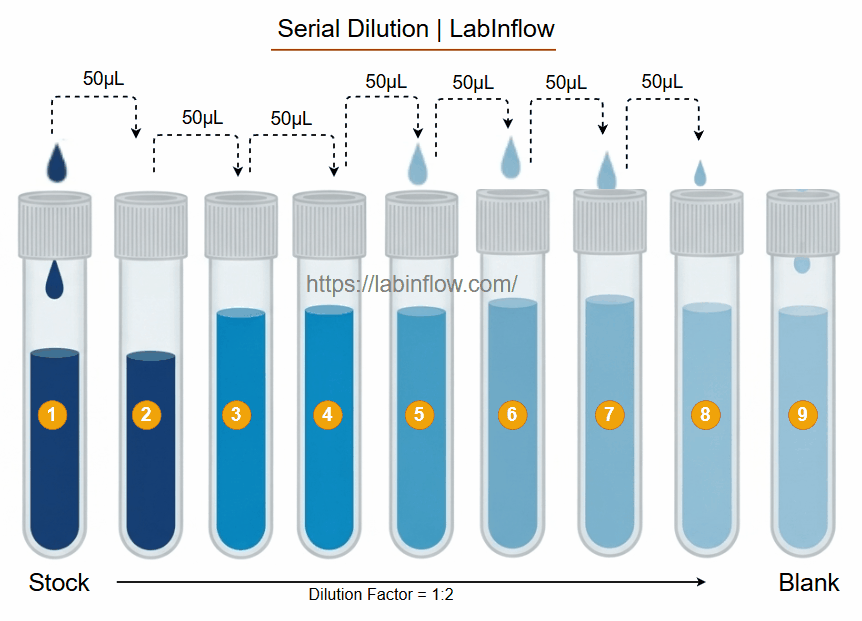A Practical Guide for Research Students and Lab Scientists
Performing an accurate serial dilution is essential for many laboratory procedures such as ELISA, microbiology plating, and biochemical assays. This detailed serial dilution protocol guide helps researchers and PhD students understand the stepwise method to dilute stock solutions, prepare standard curves, and reduce experimental errors.
For convenience, you can also use our Serial Dilution Calculator to generate detailed dilution tables and protocols automatically.
This guide will walk you through:
- What a serial dilution is
- How to prepare 8 dilution levels (including blank and stock)
- Differences in ELISA and Western Blot practices
- A table you can follow
- And a link to a free dilution calculator to speed things up
What Is Serial Dilution?
It is a step-by-step dilution process where you dilute a solution multiple times by the same factor, usually 1:2 (two-fold) or 1:10 (ten-fold). In each step, you take a portion of the previous solution and dilute it further using a diluent (usually water, PBS, or buffer).
This method is especially useful in:
- ELISA: To prepare standard curves or test various antibody concentrations
- Western Blot: To dilute protein standards like BSA (bovine serum albumin)
Serial Dilution in ELISA
In most ELISA protocols, scientists use a 1:2 serial dilution, starting from a stock solution and making 7 dilution steps, plus one blank (with just buffer, no sample). That makes a total of 8 wells or tubes.
This setup helps you plot a full standard curve, from 100% down to near-zero concentration.
Common layout in ELISA
- 1 stock (undiluted)
- 6 serial dilutions (6 is more common, number of rows in ELISA plate 8, used in most of the labs)
- 1 blank (buffer only, used for background subtraction) – this buffer has to be the same which is used for dilutions.
8-Point Serial Dilution Table (1:2 Dilution for ELISA)
This version is commonly used in ELISA, especially when working with 8-well strips or rows on a 96-well plate.
- In the table below, we assumed Final volume per well is 100 µL
- 8 dilutions = 8 wells = 8 rows of a 96 – well plate.
- 1:2 Serial Dilution means: Each row receives 50 µL from the previous row

Use a Serial Dilution Calculator
To avoid manual errors and save time, you can use our free online dilution calculator:
👉 Try the Serial Dilution Calculator Here – Its free, you can download it as excel file or pdf.
Just enter the dilution factor (e.g., 1:2 or 1:10), number of steps, and desired final volume — it will auto-generate the values and instructions for you.
Researchers also were interested to know
👉 Key Difference: Serial Dilution vs Standard Preparation – See full comparison.





